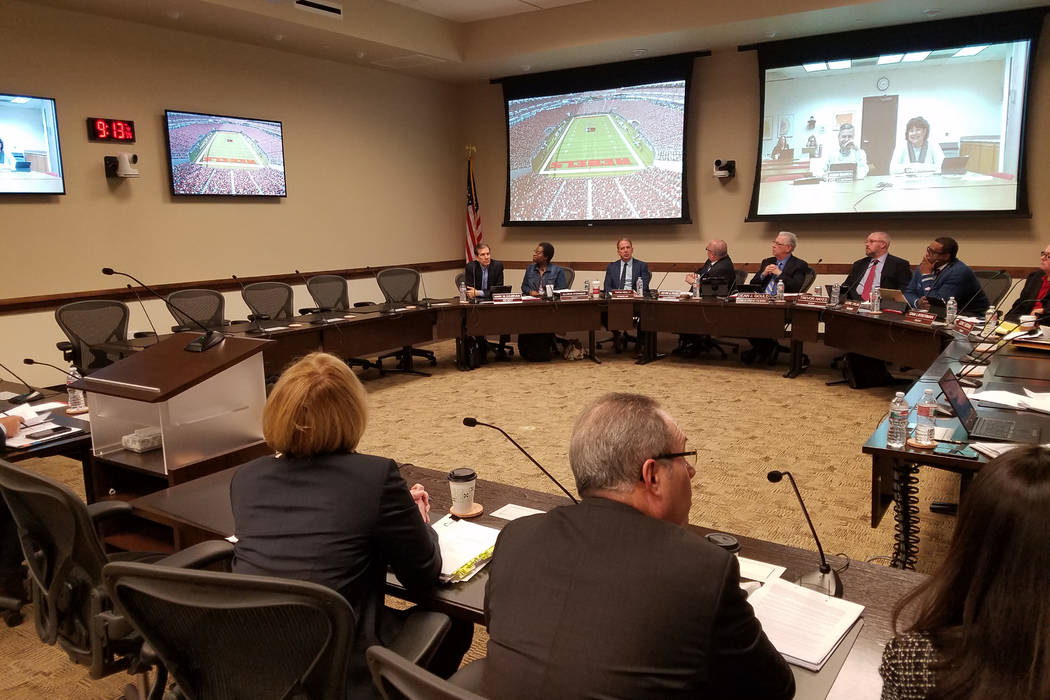Nevada Board of Regents looks at options to limit tuition hikes
Nevada students planning to attend a state college and their families soon could have a clearer picture of their education expenses.
The Nevada System of Higher Education’s 13-member Board of Regents on Thursday examined two tuition guarantee proposals designed to allow students to better budget for their educations. No action was taken, but regents are expected to revisit the topic in February.
After a tense meeting in June at which the regents approved a 4 percent increase in tuition and related fees for the 2019 and 2020 academic years, NSHE began crafting two plans aimed at providing a more predictable system.
“Both options are feasible and both options can be implemented,” Chancellor Thom Reilly said at the beginning of the presentation. “There’s no obstacles for us to implement either one, they’re just choices you have.”
Under the first option, presented by NSHE Vice Chancellor Crystal Abba, students would pay the same amount in tuition for four years after enrollment. Increases would be projected by officials in the base year over four years, then averaged to keep payments the same.
Students would get the guaranteed rate for the first four years they are enrolled at an NSHE institution or for two years at a NSHE community college. Students requiring additional time to complete a degree would get one “cushion” year, then see a spike in the required fees.
The system would set some “tough love” parameters for students and keep the system as simply as possible to administer, Abba said.
Students who are not seeking a degree or are attending part time would pay the regular rate.
The second option, which drew support from business and academic affairs officers within the system, is called a “predictable pricing method.” Under that model, the increase in the student fee would be locked in to the Higher Education Price Index, an inflation measure specific to higher education.
“They can predict, they can budget,” said Dianne Hilliard, an interim dean of academic affairs at Western Nevada College, who helped prepare both options. “It’s easy to communicate, it’s fair, it’s equitable, it’s easy to understand. I think it’s a really great program.”
Under that option, tuition would increase annually but would be projected out at least four years. It also would include a cap so that if the index figure went over 6 percent in one year, students and families wouldn’t have to pay more than that.
The cap could be adjusted lower at the pleasure of the board, Abba said, and that figure was picked because HEPI historically doesn’t jump higher than that.
To implement of the program, officials would project the HEPI increase in the base year over four years. Then the pricing would be updated each year.
The options could have implications for Nevada’s pre-paid tuition system. The treasurer’s office didn’t endorse either one, but Chief of Staff Grant Hewitt said option two would better align with the current operations.
Both proposals have contingencies in place where the regents could step in and make changes in case of an emergency, like another economic downturn.
Several regents, including Trevor Hayes and Allison Stephens, expressed frustration.
They said that only the first option complied with what regents requested in June, though NHSE officials were supportive of the second option. Stephens also said that the second option is very similar to how the system operates now.
Contact Meghin Delaney at 702-383-0281 or mdelaney@reviewjournal.com.




























